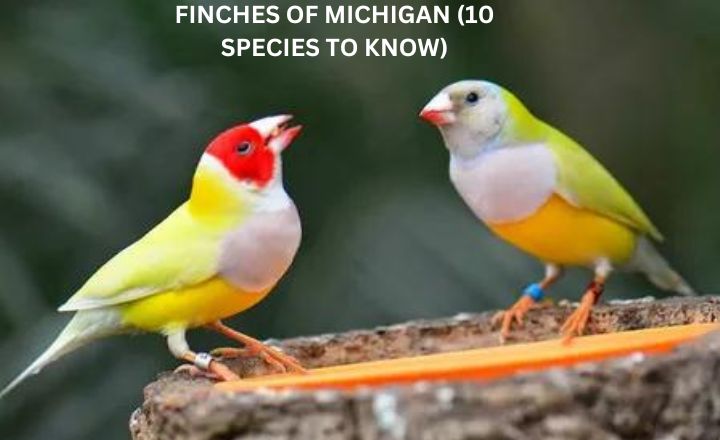Michigan, a land of scenic beauty and diverse wildlife, is also home to various fascinating finch species that grace its skies. From the vibrant flashes of red on a male Scarlet Tanager to the melodious tunes of a singing American Goldfinch, the finches of Michigan are truly a sight—and sound—to behold. We will delve into the Finches of Michigan (10 Species to know). So sit back, grab your binoculars, and get ready to embark on a journey through the enchanting world of finches in Michigan.
American Goldfinch
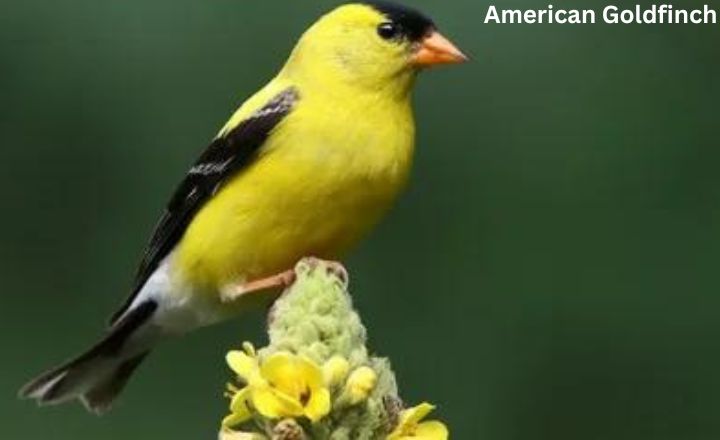
One of the most iconic finches in Michigan is the American Goldfinch, known for its vibrant yellow plumage and black wings. These small birds are common in gardens and fields across the state, with their distinctive twittering calls filling the air during the summer months. The American Goldfinch is easily recognizable by its pointed bill and forked tail, making it a favorite among birdwatchers. Get all the info and species about owls. Join us on a journey through the mystical realm of owls in Michigan as we uncover these magnificent birds of prey in all their glory.
The range of American Goldfinch can be found throughout Michigan year-round, but they are particularly abundant during the breeding season. They prefer open areas with plenty of thistle plants for food and nesting materials. Their cheerful songs add a touch of brightness to even the gloomiest days in Michigan’s unpredictable weather. Watch for these lovely finches as they dart through the air on their quest for seeds and insects!
American Goldfinches have a unique diet of seeds and flowers. They are often seen perched on thistle plants, extracting seeds, or dining on sunflower heads in backyard feeders. Their preference for areas with tall grasses and shrubs makes them commonly sighted near suburban parks and residential areas. American Goldfinches may migrate to warmer regions during winter but return to Michigan once spring arrives.
Common Redpoll
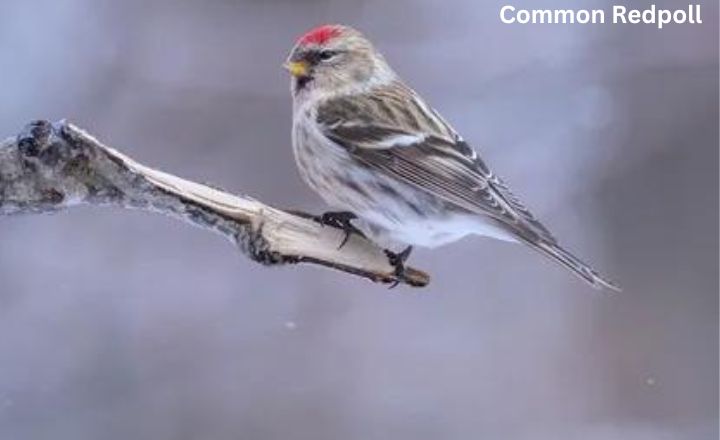
One of the most fascinating Finches of Michigan (10 Species to know) is the Common Redpoll. Easily identified by its bright red forehead and distinctive black streaking on its flanks, this small bird brings a pop of color to any backyard feeder. Common Redpolls can be found throughout the northern regions of Michigan during winter, often traveling in large flocks in search of food.
Birdwatchers in Michigan should watch for these energetic little birds as they flit from branch to branch, flashing their vibrant plumage against the snowy backdrop. With a range that extends across North America and Eurasia, the Common Redpoll is a true nomad, moving with the seasons to find suitable habitats for feeding and breeding.
Finches in Michigan can be found throughout urban and rural areas, often frequenting bird feeders for their diet of seeds and berries. Their adaptable nature allows them to thrive in various environments, making them a familiar sight for many birdwatchers in Michigan.
Goldfinches have a varied diet, including seeds from thistles and sunflowers. To spot these beautiful birds in Michigan, look for open fields and gardens where they can be seen foraging among flowers and grasses. Watch for their distinctive flight pattern as they move gracefully from plant to plant in search of food.
Evening Grosbeak
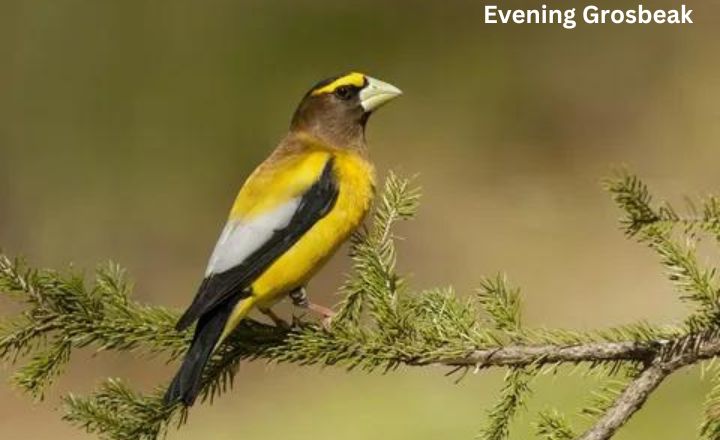
As a bird enthusiast in Michigan, one can’t help but be fascinated by the diversity of finches that grace our landscapes. Among them, the Evening Grosbeak stands out with its striking yellow and black plumage, making it a highlight for any birder lucky enough to spot one. Their massive bill for cracking hard seeds and nuts further adds to their charm and uniqueness. The range of the Evening Grosbeak is quite extensive, spanning much of North America from coast to coast.
They are known to be irregular visitors in some areas due to their nomadic nature in search of food sources. Finches of Michigan can be spotted during certain times of the year as they make their presence known with their distinctive calls and vibrant colors amidst the winter landscape. Discovering an Evening Grosbeak, among other finches in Michigan, is a special treat that brings joy and wonder to any birdwatcher’s day.
One of the most striking finches found in Michigan is the Evening Grosbeak, known for its vibrant plumage and stout beak. While they primarily feed on seeds and fruits, these birds have also been observed eating insects during breeding season to supplement their diet. Their strong bills allow them to crack open nuts and seeds easily, making them adept foragers in forested areas.
If you want to spot an Evening Grosbeak in Michigan, head to mature forests with abundant coniferous trees such as spruces and firs. These birds are often seen in small flocks moving through treetops for food, emitting distinctive calls that can help guide your search.
Hoary Redpoll
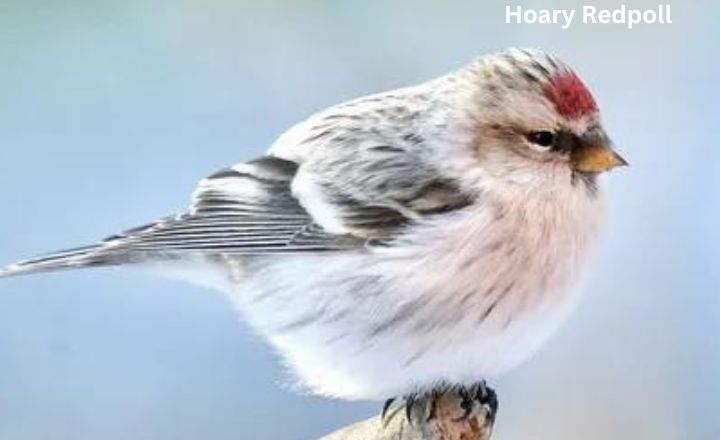
The Hoary Redpoll is a fascinating finch species known for its distinctive appearance and behavior. With its pale plumage, black streaking on the flanks, and small size, it stands out among other birds in the finch family. Its range extends across northern North America, including Michigan, where lucky birdwatchers may glimpse this elusive species during winter.
The Hoary Redpoll In Michigan can be found in coniferous forests and open woodlands, particularly during migration. As part of the diverse finch population in the state—including species like the House Finch and Purple Finch—it adds a rarity to birdwatching experiences.
The Hoary Redpoll, a fascinating member of the finch family, has a unique diet and foraging behavior that sets it apart from other birds. These small songbirds predominantly feed on seeds from plants like birch and alder trees, using their sharp bills to extract the nutritious kernels. They also visit backyard bird feeders in search of sunflower seeds and thistle.
To glimpse the elusive Hoary Redpoll in Michigan, birdwatchers should head to open woodlands with plenty of birch trees or areas with dense shrubs where they can forage for food undisturbed. Look out for their distinctive white-accented plumage and small size among mixed flocks of other finches and sparrows.
House Finch
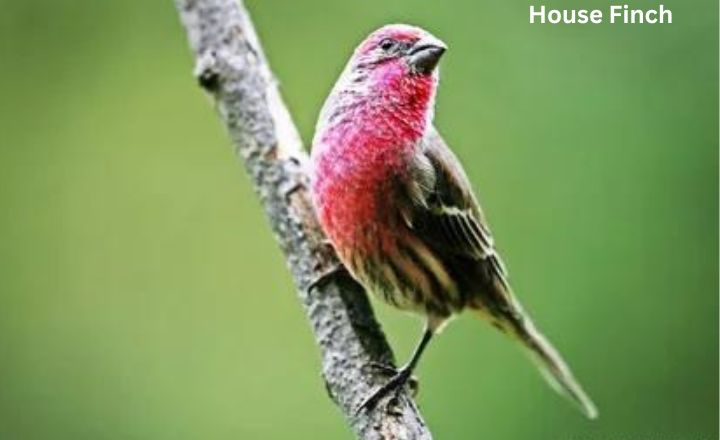
The House Finch is a common sight in Michigan, known for its vibrant red plumage on the males and streaked brown appearance on females. Finches In Michigan can be easily identified by their stout bills and cheerful songs, which add a touch of color and melody to the Michigan landscape. Their range extends across most of North America, with populations thriving in urban, suburban, and rural environments.
In Michigan specifically, House Finches can be found year-round, making them one of the easier finch species to spot throughout the seasons. While some may mistake them for Purple Finches due to similar coloring, paying attention to subtle differences in bill shape and song can help differentiate between the two species.
One of the most common finches in Michigan you’ll encounter is the House Finch. These small birds have a varied diet, including seeds, fruits, and insects. They are known to forage in various habitats, from urban areas to open woodlands, making them adaptable and easily spotted.
If you’re looking to spot House Finches in Michigan, keep an eye out for them near bird feeders or perched on utility lines. Their vibrant red plumage makes them stand out among other birds, adding a splash of color to your backyard or local park. As part of the diverse finch population in Michigan, House Finches provide visual delight and play essential roles in seed dispersal and insect control within their ecosystems.
Pine Grosbeak
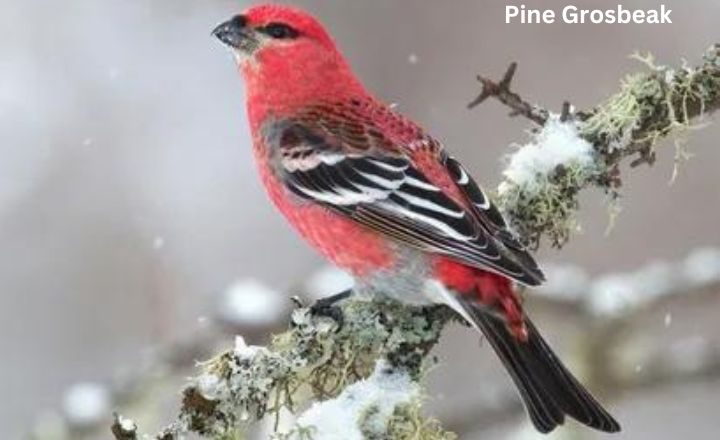
The Pine Grosbeak, known for its vibrant red plumage and cone-crushing beak, is a striking sight in the boreal forests of North America. This finch species boasts a robust body and a distinctive call that echoes through the coniferous woodlands. Despite their bold appearance, they are often elusive and prefer to forage high in the treetops.
The Pine Grosbeak is a winter visitor from its northern breeding grounds. Its range extends into the upper regions of Canada, making occasional appearances in states like Michigan during colder months. As a member of the Finch family, I find this species adds charm to Michigan’s diverse avian population and offers bird enthusiasts a unique opportunity to observe their behaviors and interactions with other woodland creatures.
The Pine Grosbeak’s diet mainly consists of seeds, buds, and fruits, making it a lover of coniferous forests where these food sources are abundant. This hefty finch uses its robust bill to crack open pine cones and extract nutritious seeds. When foraging, they can be seen perched on treetops or hopping along branches for their next meal.
Those seeking to find the Pine Grosbeak should venture into the boreal forests of northern Michigan during winter months when these birds migrate south in search of food. Their bright red plumage adds a splash of color against the snowy backdrop, making them easier to spot among the evergreens.
Pine Siskin

The Pine Siskin, a small finch with streaky brown plumage and yellow accents on its wings and tail, is a delightful sight for birdwatchers in Michigan. These birds are known for their small size, energetic feeding habits, and sociable behavior, often forming large flocks during migration seasons. Their distinctive sharp calls echo through the forests and woodlands where they dwell.
Finches in Michigan Are commonly spotted in coniferous forests, open woodlands, and suburban areas with ample food sources. Their adaptability allows them to thrive in diverse environments, making them a familiar sight at backyard feeders throughout the state. Pine Siskins occupy a wide range that extends from coast to coast.
The Pine Siskin, a small and unassuming bird in North America, is known for its varied diet and foraging habits. These finches are often spotted in mixed flocks with other species, feeding on a wide range of food, including seeds, insects, and tree sap. Their versatile diet allows them to adapt easily to different environments and seasons.
In Michigan, Pine Siskins can be found in various habitats, including forests, parks, and suburban areas. Look for them in coniferous trees where they can be seen flitting between branches for food. Consider setting up a bird feeder with Nyjer or sunflower seeds to attract these lively birds to your yard during winter.
Purple Finch
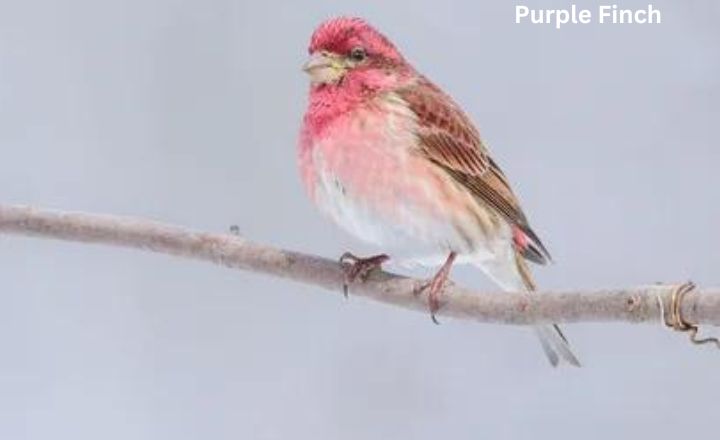
The Purple Finch, a striking bird in North America, is easily identified by its vibrant plumage and melodic song. The male Purple Finch stands out among other finch species with a rose-red head and breast, streaked back, and thick bill. Its elusive nature adds to the allure of spotting this magnificent bird in the wild.
In terms of range, the Purple Finch can be found across much of North America during the breeding season, ranging from southern Canada down to parts of Mexico. In Michigan specifically, these finches are known to frequent wooded areas and suburban gardens.
Regarding diet, these finches primarily feed on seeds, fruits, and insects. Their versatile palate allows them to thrive in various environments, from woodlands to suburban areas. Watch for dense forests with ample tree cover when searching for the Purple Finch in Michigan.
They are also commonly spotted near backyard bird feeders or parks with abundant vegetation. These birds prefer to forage in trees and shrubs, where they can find seeds and berries easily.
Applebee’s happy hour is a time of day that many people look forward to. The popular restaurant chain offers a variety of food and drink specials during this time, making it a great opportunity for customers to enjoy delicious food and drinks at a discounted price. Whether you’re looking for a refreshing cocktail after a long day at work or a snack to share with friends, Applebee’s happy hour has something for everyone.
Red Crossbill
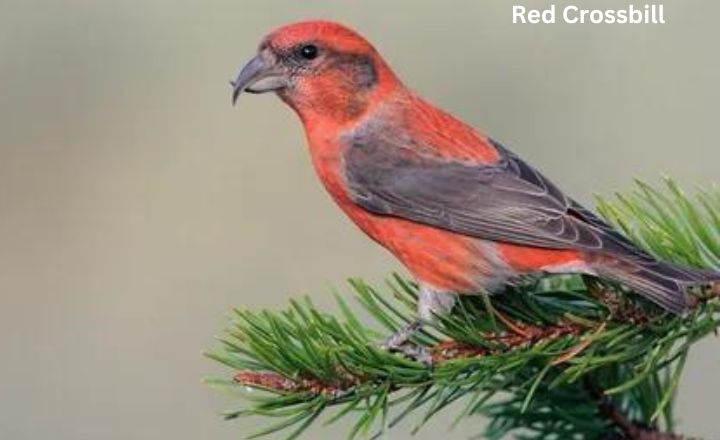
The Red Crossbill, a striking finch species known for its unique crossed-bill adaptation, can be a fascinating sight in the forests of Michigan. Their distinctive bills are specialized for prying seeds from pine cones, making them expert foragers in coniferous habitats. While their plumage can vary from red to yellow and green, it often serves as effective camouflage amongst the evergreen trees where they thrive.
In Michigan, the range of the Red Crossbill overlaps with other finch species, such as the House Finch. This coexistence presents an interesting dynamic as these birds compete for resources and territory. Birdwatchers in Michigan have the opportunity to observe various finch species throughout the year, adding to the region’s rich avian diversity.
The Red Crossbill, a unique finch found in Michigan, has a fascinating diet and foraging habits. These birds are known to primarily feed on the seeds of coniferous trees, using their specialized crossed bills to extract the seeds from pine cones. Their diet is rich in nutrients and provides them with the energy they need to survive in the colder climates of Michigan.
They can be found in various habitats across Michigan, where coniferous trees are abundant, such as pine forests and wooded areas. Birdwatchers keen on observing these unique finches should watch for their distinctive calls and look for them high up in tree canopies where they can be seen perched while feeding on pine cone seeds.
White-winged Crossbill
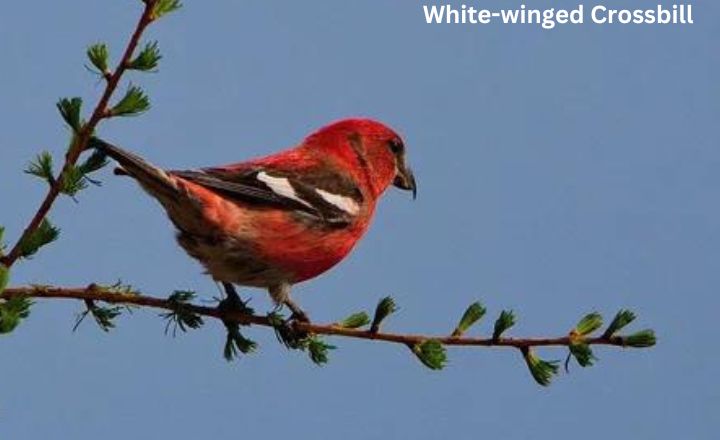
The White-winged Crossbill, with its distinctive crossed bill adapted for extracting seeds from conifer cones, is a fascinating species to encounter in the forests of Michigan. Easily identifiable by its white wing bars contrasting against a streaked body, this bird showcases remarkable precision and skill in its feeding behavior.
Found primarily in the northern regions of North America, including parts of Michigan, the White-winged Crossbill inhabits coniferous forests where it can be seen moving deftly among the trees searching for food. Their range extends across Canada and into the northeastern United States during different times of the year, depending on food availability.
The White-winged Crossbill, a fascinating member of the finch family found in Michigan, boasts a diet primarily consisting of seeds from coniferous trees such as spruce and pine. With its uniquely crossed bill, this species has evolved to extract seeds from cones with remarkable precision and efficiency. Their foraging habits often involve maneuvering deftly among branches to access hidden seeds, showcasing their specialized feeding adaptations.
To observe the White-winged Crossbill in Michigan, one must head to dense boreal forests or mixed woodlands with abundant coniferous trees. Look for them high up in the canopy, especially during winter when food sources may be scarce elsewhere.
Summary
Finches of Michigan (10 Species to Know) offers birdwatchers and nature enthusiasts a unique opportunity to observe and appreciate these colorful and charismatic birds. Each species brings charm and beauty to the state’s landscapes, from the American Goldfinch to the Purple Finch. By learning about these 10 species of finches that call Michigan home, we can deepen our connection to the natural world and gain a greater appreciation for the rich biodiversity around us. Whether observing them at backyard feeders or out in the wild, studying and understanding these fascinating creatures can bring joy and wonder to our lives. So, next time you’re out exploring Michigan’s great outdoors, keep an eye out for these delightful finches and marvel at their presence in our midst.


